|
The roots of the Monarch Bear Institute are grounded in the traditional Scots-Irish culture of America

Dr. Rodney Karr - wearing his Shreiners / Masonic pin dated San Francisco 1902, with the Shreiner emblem, and the famous Monarch Bear upon it. Photo taken at Dr. Karr's previous residence, in San Francisco, the Chateau Tivoli, 1057 Steiner Street.

1902 Shreiner's / Masonic pin with the famous Monarch Bear upon it.
Dr. Karr, the founder and director of the Monarch Bear Institute was taught and inspired by his Scots-Irish parents and ancestors to have a deep love appreciation and connection to the land, and it's trees, plants and creatures. He was raised in an extended old American Scots-Irish family, which had maintained Scots-Irish customs, values, and beliefs throughout over two hundred and eighty years of being in America. His maternal ancestor, John Myrtle, was born in Culpepper County, Virginia, in 1730. He served in the American revolutionary war. His ancestors were early pioneers in Kentucky who were part of Daniel Boone's colony. His maternal great grandmother, Annie Mytrle Harris's grandmother, Phoebie Fields Myrtle's brothers were in the Lewis and Clark expedition, which explored the Louisiana territory and the Pacific Northwest for the US Government. 2004 is the two hundredth anniversary of the Lewis and Clark expedition. Her brother's names were Rubin and Thomas Fields. Dr. Karr's ancestors, typical of many American Scots-Irish, experienced wander-lust and ever moved west, with the American expansion. Dr. Karr's great grandmother and grandfather were early pioneers in Baker Oregon, coming there in the eighteen seventies.
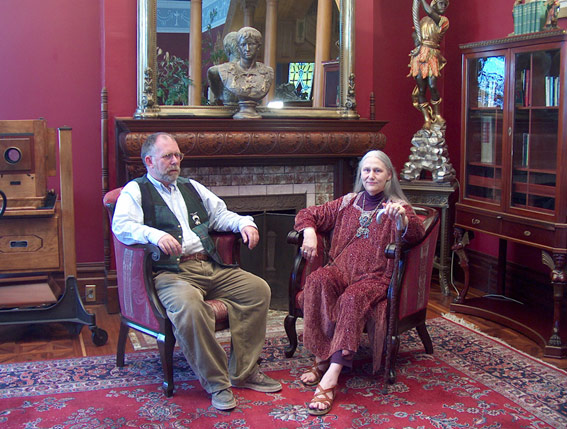
Dr. Karr with his close friend and world famous poetess Jehanah Wedgewood, who is on the board of directors of the Monarch Bear Institute. Photo taken at the Chateau Tivoli, Dr. Karr's previous SF residence.
Dr. Karr's father, who was a wilderness man, and a lumber jack, had spent as much as three months alone in the wilderness of Oregon and Washington, as a youth in the 1920's. He had been a gold miner, a merchant marine, a fisherman, and a person knowledgeable in all aspects of nature and survival in nature. His father had a deep love of nature and it's creatures. He took Dr. Karr, into the wilderness as soon as he could walk, and taught him the names of all the plants, trees, herbs, animals, rivers, and mountains. Dr. Karr's philosophy of eco-nature spirituality comes directly from his father and mother and their deep nature spiritual beliefs which are characteristic of Scots-Irish people in the old world, as well as America. The goals, beliefs, and values of the Monarch Bear Institute, flow out of over two hundred and eighty years of Scots-Irish ancestors in America. An article about the history of the Scots-Irish in America follows, and below that is more extensive information about Dr. Karr's Scots-Irish ancestors.
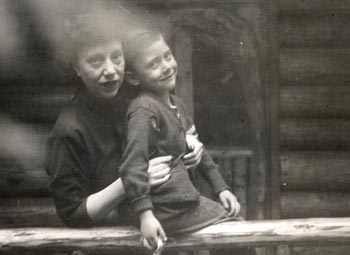
Rodney with his mother, Adeline, at Mt. Hood, Oregon log-cabin

Rodney with his mother, Adeline, age 4, in front of log-cabin built by his father, Rex, Mt. Hood, Oregon
The following article is reprinted from Parade Magazine, in the October 3 issue of the San Francisco Chronicle.

Top (l-r): James Stewart, Audie Murphy, Reba McEntire, Mark Twain, Robert Redford, Pat Tillman. Row 2 (l-r): Andrew Jacson, John McCain, Edgar Allan Poe, Rosa Parks.
Row 3 (l-r): Dolly Parton, George C. Scott, George S. Patton.
Row 4 (l-r): John Wayne, Tallulah Bankhead, Ronald Reagan.
Why You Need To Know The Scots-Irish
Byline James Webb
Published: October 3, 2004
Going south on I-81, the mountains are beautiful—smoky from the haze that the sun makes when it burns into the pine. You may see cars and Burger Kings on that highway, but I am watching my own ghosts: tough, resilient women on buckboard wagons, hard men with rifles walking alongside, and kids tending cattle as they make their way down the mud trail called The Wilderness Road.
It is here in the Appalachian Mountains that my people, the Scots-Irish, settled after leaving Ireland and the north of Britain in the 18th century. They tamed the wilderness, building simple log cabins and scraping corn patches in thin soil. And they pressed onward, creating a way of life that many would come to call, if not American, certainly the defining fabric of the South and the Midwest, as well as the core character of the nation’s working class.
I am determined to reclaim the dignity of these people—for themselves and for America. It’s long overdue.
Off the highway in Virginia, I follow narrow winding roads past small frame houses, finally stopping at the entrance to Alley Hollow. My great-great-grandparents are buried back here, in a rough patch of woods on top of a nearby mountain.
Like many others, these ancestors have only rocks for headstones. I worry that, when my generation dies, their heritage will be lost just as completely—buried under the avalanche of stories that have on occasion ridiculed my people and trivialized their journey.
They came with nothing, and, for a complicated set of reasons, many of them still have nothing. Slurs stick to me, standing on these graves.
These people are too often misconstrued and ignored when America’s history is told. They did great things. And, in truth, the Scots-Irish (sometimes also called the Scotch-Irish) are a force that still shapes our culture.
Their Gifts To America
The Scots-Irish brought with them a strong, bottom-up individualism, largely inventing America’s unique populist-style democracy. They gave us at least a dozen Presidents, beginning with Andrew Jackson and including Chester A. Arthur, Ulysses S. Grant, Theodore Roosevelt (through his mother), Woodrow Wilson, Ronald Reagan (again, through his mother) and, most recently, Bill Clinton.
“
I worry that, when my generation dies, the heritage of a people now often ignored will be lost completely.”
Their unique soldierly traditions formed the backbone of the country’s military, particularly in the Army and Marine Corps. In the Civil War, they formed the bulk of the Confederate Army and a good part of the Union Army as well, and in later wars they provided many of our greatest generals and soldiers.
Stonewall Jackson comes to mind, as do Grant, George S. Patton, and a slew of Army chiefs of staff and Marine Corps commandants. Not to mention Sgt. Alvin York, the hero of World War I; Audie Murphy, the most decorated soldier of World War II; and David Hackworth, one of America’s most decorated veterans of Korea and Vietnam.
The intense competitiveness that makes them good soldiers also has produced a legion of memorable athletes, business leaders and even such completely American pastimes as NASCAR racing, which evolved from the exploits of the daring moonshine runners of the Appalachian Mountains during Prohibition.
They created and still dominate country music—which, along with jazz and soul, is one of the truly American musical forms. They gave us so many brilliant writers—Mark Twain the lion among them, Horace Greeley, Edgar Allan Poe and Margaret Mitchell not far behind, and Larry McMurtry a good honorable mention—that their style of folklore became one of the truest American art forms. And they brought us a horde of thespians, including Tallulah Bankhead, Ava Gardner, Jimmy Stewart, John Wayne, Robert Redford and George C. Scott.

A Culture Of Contrasts
The traditional Scots-Irish culture, like America itself, is a study in wild contrasts. These are an intensely religious people—indeed, they comprise the very heart of the Christian evangelical movement—and yet they are also unapologetically and even devilishly hedonistic.
They are probably the most anti-authoritarian culture in America, conditioned from birth to resist. (It is interesting that Rosa Parks, whose refusal to move to the back of the bus sparked the modern Civil Rights movement, speaks of her Scots-Irish great-grandfather.) And yet they are known as the most intensely patriotic segment of the country as well.
“
They created a way of life that many would come
to call, if not American, the core character
of the nation’s working class.”
They are naturally rebellious, often impossible to control, and yet their strong military tradition produces generation after generation of perhaps the finest soldiers the world has ever seen.
They are filled with wanderlust, but no matter how far they roam, their passion for family travels with them. Underlying these seeming contradictions is a strong unwritten code of personal honor and individual accountability.
Rednecks
Because “sophisticated” America tends to avert its eyes from them, it is inclined to ignore or misunderstand this culture. The Scots-Irish tradition of disregarding formal education and mistrusting, even despising, any form of aristocracy has given us the man the elites love to hate—the unreconstructed redneck. The Southern redneck is an easy target, with his intrinsic stubbornness, his capacity for violence and his curious social ways.
His legacy is stained because he became the dominant culture in the South, whose economic system was based on slavery. No matter that the English aristocrats of Tidewater were slavery’s originators and principal beneficiaries or that the typical Scots-Irish yeoman had no slaves.
His is a culture founded on guns. He considers the Second Amendment sacrosanct. Literary and academic America sees such views as not only archaic but also threatening.
The things he’s known for aren’t exactly valued in America’s centers of power. He’s always been a loyal American, sometimes to the point of mawkishness. He shows up for our wars. He hauls our goods, grows our food, sweats in our factories.
“
My culture needs to reclaim itself—not
let others define, mock and use it.”
In the classic film Cool Hand Luke, the warden of a Southern work camp was fond of saying to the irascible title character, “Luke, we got to get your mind right.” But the warden never got Luke’s mind right. He put Luke in solitary. He put him in chains to keep him from running away. But Luke kept running, kept resisting, because he would rather die than have the warden make his mind right.
Luke was nothing more than an unpretentious, unreconstructed, unre-educated redneck. And America is a much stronger country for all his stubbornness, his willingness to stay true to himself and his refusal to back down in the face of pressure from above.
A Time for Rediscovery
The Scots-Irish are a fiercely independent, individualist people. It goes against their grain to think collectively. But, as America rushes forward into yet another redefinition of itself, the contributions of the Scots-Irish are too great to remain invisible. My culture needs to reclaim itself—stop letting others define, mock and even use it—and in so doing to regain its power to shape the direction of America.
Because our country needs us.
We are the molten core at the very center of its unbridled, raw, rebellious spirit. We helped build this nation from the bottom up. We face the world on our feet and not on our knees. We were born fighting. And if the cause is right, we will never retreat.

NASCAR driver Jeff Gordon, Hollywood glamour queen Ava Gardner, and golf legend Arnold Palmer share a Scots-Irish heritage.
Who Are The Scots-Irish?
In the decades leading up to the American Revolution, as many as 400,000 immigrants left Ireland, Scotland and northern England for America. While some were Irish and some English, the majority were Scottish Protestants, mostly from Northern Ireland, where they had grown weary of the conflict between the Anglican English and Irish Catholics.
Variously known as the Ulster Scots, the Scots-Irish and the Scotch-Irish, they traveled in family groups rather than as individuals and settled together on America’s frontiers, where, because of interlocking family networks, their folkways became dominant. One group settled in New Hampshire, spreading out into Vermont and Maine, but the overwhelming majority— more than 95 percent—settled along the Appalachian Mountains from Pennsylvania down to north Georgia and Alabama.
From there they migrated westward, forming the backbone of the rural South and Midwest, and then into settlements in Texas, Colorado and the Pacific Coast. They also moved north into the industrial areas of Michigan, Illinois, Ohio and Indiana.
It is estimated that there are more than 27 million descendants of the Scots-Irish migration now living in the U.S. Because people from this culture also identify themselves as of Scottish, English or Irish descent, the actual number is probably much higher.
Which states have the highest Scots-Irish populations? Pennsylvania, Virginia, West Virginia, Kentucky, Tennessee, North and South Carolina, Georgia, Alabama, northern Florida, Mississippi, Arkansas, northern Louisiana, Missouri, Texas, Oklahoma, Kansas, Colorado, southern Ohio, Illinois, Indiana and parts of California, particularly around Bakersfield. The north-central “factory belt,” especially around Detroit, also saw a heavily Scots-Irish influx.
Combat Marine, novelist and Emmy-award winning journalist, PARADE Contributing Editor James Webb was Navy Secretary under President Reagan. This article is adapted from his book “Born Fighting” ©2004, published by Broadway Books.
Harris / Myrtle / Fields Family
Early American Family History - dating back to 1730 in Virginia
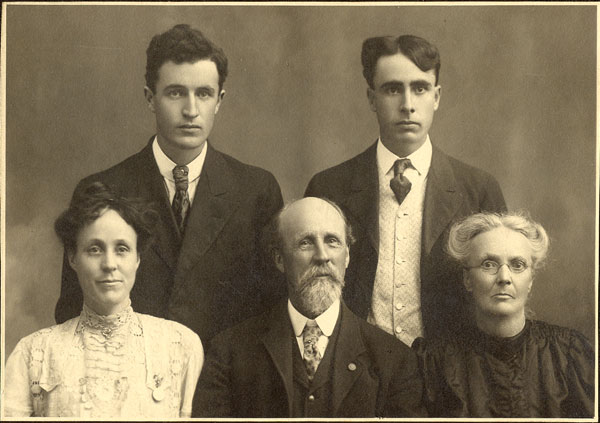 The John Harris Family - early pioneer family of Baker, Oregon and the Blue Mountains of Oregon
The John Harris Family - early pioneer family of Baker, Oregon and the Blue Mountains of Oregon
John Harris - center, elder fought in the Civil War, and following the Civil War, became Colonel of a fort in Baker, Oregon. After retirement, he raised horses for the western calvary on a horse ranch in the Blue Mountains, outside of Baker, Oregon.
Annie Tolbert -lower right, wife of John Harris, descendant of American families dating back before the American Revolutionary war. Her great grandfather, John Myrtle fought in the Revolutionary war and was born in Virginia, in 1730. Her great grandmother, Phoebe Fields Myrtle, was elder sister to Rubin and Thomas Fields, who were in the Louis and Clarke expedition. Thomas Fields, in hand-to-hand combat with a Souix warrior, killed the warrior. The warrior was attempting to take some of the expeditions provisions, which resulted in the conflict. This was the first killing of a Native American person, by an American government action. Grizzly bears were also discovered and killed during the expedition. Dr. Karr in his film project and shamanistic work has been motivated to heal the ancestral wounds caused by his ancestors to both Native Americans, and Grizzly Bears. Dr. Karr's father who was a wilderness man in the 1920's in Oregon and Washington, also had killed Grizzly Bears, and had told Dr. Karr many stories about these horrific encounters. Through his great grand mother Annie Tolbert's family line, Dr. Karr is at least an eigth-generation American. He feels a particularly close connection with the American land as a result of this long family American connection.
Dr. Karr's mother's family's patriarchal line has a long history of being pioneers - generation after generation (eight generations). They began as early colonists in Virginia, accompanied Daniel Boone as early settlers in Kentucky, and were given land grants in Missourri by the federal government because of their involvement in the Lewis and Clarke expedition, and moved on to be early pioneers in Oregon. Dr. Karr feels that he is continuing his family pioneer work on a different level in pioneering his shamanistic work.
Dr. Karr calls upon his pioneer Harris ancestors to spiritually support his Jungian / Shamanistic work.
Albert Mrytle Harris - well dressed gentleman, upper right
Dr. Karr's maternal grandfather. Father of Dr. Karr's mother, Adeleine Anabelle Harris. He was a great horseman, and was most proud of his showteam of Clydesdale horses, and had been a cowboy and sherrif.

Turn of the Century, Fourth of July Celebration in Baker Oregon, where Dr. Karr's mother's family the Harris's are a pioneer family
Kerr Family

Rodney's GrandFather Roy Kerr- was a star athlete
Rodney's Parents
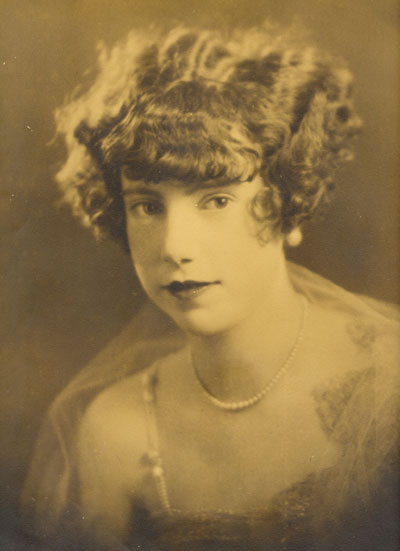
Adeline Anabelle Harris Kerr - Rodney's Mother.
Adeline was a chorus girl upon a river-boat speak-easy during prohibition in the roaring 20's which navigated up and down the Willamit river in Portland Oregon, providing alcohol and fun times for its patrons.

Rex Kerr - Rodney's Father
Rex Kerr was the chief accountant for Southern Pacific Railroad -as was his father, Roy Kerr. Rex means "King" in Latin, and Roy means "King" in French.
Rodney Karr's Matriarchal (Mother's) Clan
Siol Mhorgan No Clann Aodh - The Mackays**
The Origin of this clan cannot be satisfactorily discovered, but traditionary notices have been collected which carries its descent to the aboriginal Gaelic inhabitants. The Norwegian Sagas mention their reputed ancestor as an Iarl a Norse term which would be used instead of the Celtic Maormór, applied to a person of great power and dignity, who had the government of a district. Several Scottish writers account this clan a branch of the Forbeses, with whom there is certainly a similarity of badge and armorial bearings.
Morgan, son of Magnus, of Ma'nus, the undoubted ancestor of the Mackays, flourished from 1315 to 1325, and from him the clam has been called Siol Mhorgan, i.e. the race or offspring of Morgan, Donald, his son, married a daughter of Mac Nial of Gigha, and left a son named Aodh, a word so peculiarly Celtic as to have greatly puzzled orthographers, who anciently, were accustomed to use the letter Y as best indicating the sound; but Aodh, when occurring as a Christian name, is, from some fancied resemblance, transformed into Hugh. It is from his son, Donald Mac Aoidh, that the clan has acquired the patronymic Mackay according to the present mode of spelling. Angus dub, or dark complexioned, is the first chief mentioned in written record; he opposed Donald of the Isles when marching towards the South of Scotland in prosecution of his clan the Earldom of Ross, and in the vain endeavor to arrest his progress at Dingwall, Mackay was defeated and taken prisoner, but, after a short confinement, he was released and the Lord of the Isles sought his alliance by giving him his daughter Elizabeth in marriage, with various lands, by charter 1415. In this document he is called "Angusis Eyg de Strathnaver," which was then the chief seat, but subsequently the whole property got the general appellation of the Rea country.
| 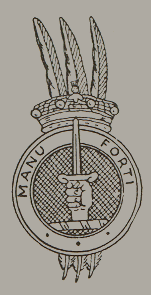
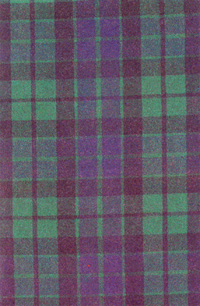
Origin of Name: Gaelic MacAoidh (son of fire).
Plant Badge: Great balrush.
War Cry: Bratach Bhan Chlann Aoidh (The White Banner of MacKay).
Pipe Music: MacKay's March. |
The Mackays were at this time very powerful, and Angus du', who had a following of 4,000 men, kept that part of the kingdom in agitation with frequent military expeditions. King James I, coming to Inverness resolved to curb so powerful a subject, and contrived to arrest the refractory chief and his four sons, one of whom was accepted as a hostage for the peaceable conduct of his father who was then liberated; but next year, 1427, he was treacherously killed when searching for the bodies of some relations who had fallen in a desperate clan battle near his castle of Tong.
The Mackays were involved in almost continual disputes with their neighbors, and the most afflicting hardships and bloodshed occurred on both sides. They were too powerful and jealous to brook aggression or insult from the Earls of Sutherland and Caithness, who were very ambitious to elevate themselves, and depress this indomitable clan. The inhabitants of Caithness under one or another leader, were prone to make inroads upon the Rea country; and it may give an idea of the state of vigilance in which the people must have been kept by their enemies, to mention that, besides petty slaughters, they fought ten pitched battles from the field of Tuttumtarmbich, in 1406, to that of Gar-uarraí', in 1555.
The Mackays were early and zealous promoters of the Reformation; and Donald who was chief in the beginning of the 17th century, raised a body of 3,000 men of his own clan, the Gunns, Munros, Sinclairs, and others, to battle for the Protestant cause; fifteen hundred of these he selected, and sent under the command of Col. Robert Munro, to the assistance of the king of Bohemia; but on his death, which soon after took place, they entered the service of Gustavus, king of Sweden, and performed such deeds of valour as drew forth the frequent and warm applause of that heroic monarch and his general officers* Donald subsequently went over himself with a reinforcement, and on his return, after the death of Gustavus, he became of great service to Charles I, and, as a reward for his loyalty, he was raised to the peerage by the title of "Lord Reay".
Although thus enobled by the Stewarts, the Mackays strenuously contended for the Protestant succession, and it was Hugh Mackay of Scourie who commanded troops of William of Orange against the Highlanders under Dundee at Killiecrankie, in 1689. In 1715 they were also in arms for King George I, and were of great service in keeping the adverse clans in check, and preserving the castle and town of Inverness from the adherents of King James. In 1745 they were equally active on the same side, having 800 men under arms, and gave much annoyance to those around them who were favourable to the cause of Prince Charles.
In 1795 the Reay Fencible regiment, or Mackay Highlanders, were embodied, and their services being extended to Ireland, they were hotly engaged with the rebels, whose signal defeat at the hill of Tara was accomplished by this regiment in gallant style.
Mackay was the last Highland chief who held his lands, as allodial territory, for it was not until the year 1499 that a feudal charter was thought necessary to secure its possession.
The present Right Hon. Eric, Lord Reay, having no male issue, the chiefship will devolve on the elder of his two brothers, the Hon. Major Alexander Mackay, or his surviving son; failing these, the title would go to a family in Holland. Mackay, of Auchness, is accounted chief presumptive, on failure of the direct line.

[Mackay Coat of Armor Graphic] Pg 124
The COAT ARMOUR is az. a chevron arg. Charged with a rea buck's head in point, and two grasping dirks, inclined towards it, all proper. Crest, a right hand holding a dagger in pale, proper. Supporters, two soldiers as sentinels, in the dress worn by the clan regiment in the great civil war. Motto, "Manu forte".
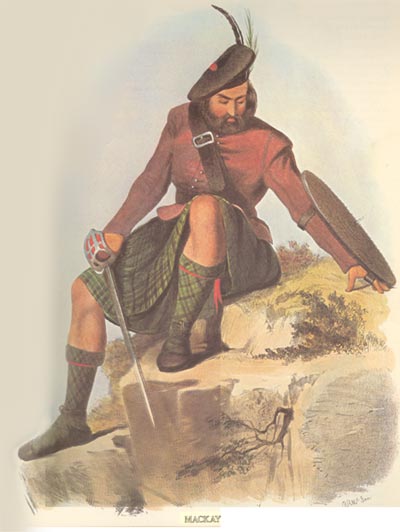
[Mackay warrior's picture] Pg 125
The SUAICHEANTAS, or badge, is Bealuidh, Broom, Spartium Scorparium.
The PROBARIEACHDAN are Brattach bhan Chlann Aoidh, or the Mackays white banner, which is the salute. Donald Duagal Mhic Aoidh, Iseabel Nic Aoidh and Ban Tighearn Mhic Aoidh and Cumbadh Strath h-Alldail, are laments for the chief, his lady, his daughter, and Mackay of Strath Alladail.
The figure wears a flat bonnet, on which the clan badge is displayed, and an eagle's feather. The doublet, or jacket, is of a strong cloth formerly much worn, to which a dull red colour was imparted by a native dye. This is the first instance on which the Feilebeag is given without a plaid, a manner of dressing by no means uncommon' indeed, a simple covering for the lower portion of the body, by wrapping around he loins a piece of some material, was evidently the primitive garb of all nations, and the kilt is, therefore, the oldest, as it is the most characteristic relic of the Highland costume. The tartan is that recognized as peculiar to the Clan Aodh; and the hose and garters do not differ from many already introduced; the brogs are similar in form to those painted in the figure, illustrative of the Chisholms, buat are molach or of hide, from which the hair is not removed; the sword and target are of the forms in common use among the Highlanders.
* An interesting account of "Munroe's Expedition with the Scots regiment, Mac Keyes," was published in folio, 1637, -now a very scarce book.
** From: McIan, R.R. (1980) The Clans of the Scottish Highlands, Alfred A. Knopf, Publisher, New York.
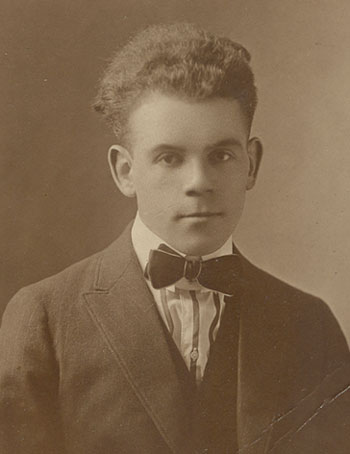
Rodney's great Uncle (Mother's uncle) - Albert Mackay, who was a warrior in WWI, and was like a grandfather, also known as "Uncle Curley"
Rodney Karr's Patriarchal (Father's) Clan
The Kerr (Karr) Clan
Rodney Karr's patriarchal family clan is Clan Kerr. His grandfather rejected going back to his ancestral lands, the lowlands of Scotland, when he was offered in the 1920's to become the Earl of Lothian. Clan Kerr are known as the guardians of the marches (the border lands between Scottland and England). The ancient Earls of Lothian were important supporters of Queen Mary, Queen of the Scots, and had rescued her from jail at one point in Scotland, only to have her go against their advice, and go to England, seeking protection from Queen Elizabeth, at which point she was arrested by Queen Elizabeth. They attempted to free her from prison in England, but failed, and she was eventually executed many years later.
According to family mythology, the Earls of Lothian, are the descendants of King Lot of Lothian (a proported Faery King). According to the Artherian Legends, King Arthur's aunt, sister to his morther Igraine.
Morgause according to legend, was foster mother to her grand nephew, Mordred, who was the son of King Arthur and his half-sister Morgain, the product of a Beltaine sexual right. King Arthur and his son did battle with each other. Mordred was killed, and King Arthur was taken away into the faery world, to live eternally, by the faery women.
Some of the most important faery tradition poems which maintained the Druid philosophies in secret language through the Christian period, were written in the lands and territories of Clan Kerr. These include the following two poems, The Ballad of Thomas Rhymer, and Young Tame Lin, or Tamlane. The Kerr's are entitled with being the Barrons of Roxbrugh, and the Earls of Lothian. The main character in the poem, Tame Lin (Tame Lin) is referred to in the poem, as being the grand-son of Roxbrugh. These two important poems which demonstrate the process of initiation, descent, and return from the faery world, follow.

|
Kerr*
Crest Badge: The Sun in his splendor
Motto: Sero sed serio (Late but in earnest)
Gaelic Name: Cearr; MacGhillechaer.
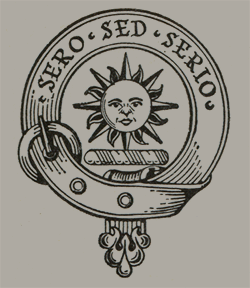
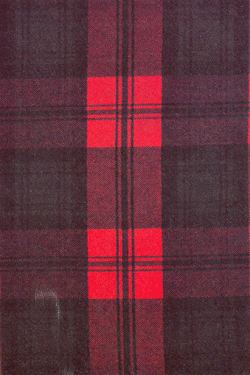
Origin of Name: British caer |
Kerr*
Crest Badge: The Sun in his splendor
Motto: Sero sed serio (Late but in earnest)
Gaelic Name: Cearr; MacGhillechaer.
Traditionally the Kerrs were of Anglo-Norman origin and descended from two brothers who settled in Roxburgh in the 14th century, but it is also claimed that the name is derived from the Celtic word meaning strength. The names, Ker, Kerr, and Carr were on the Borders.
The Kerrs of Cessford were wardens of the marches and prominent Border conflicts. They were granted old Roxburgh by James IV, and Sir Walter Cessford fought on the side of James VI at Langside in 1568. Sir Robert, born in 1570, was created Lord Roxburghe in 1600, and in 1616 was elevated to the Earldom of Roxburghe and appointed Lord Privy Seal in 1637. By Marriage with the Earl's daughter, Jean, Sir William Drummond became 2nd Earl of Roxburghe and assumed the name Ker. John, 5th Earl, supported the Union of 1707 and was a noted book-collector, and the sale of his library was a famous event in the literary world. The direct line having failed, Lord Bellenden became 4th Duke, and his death without surviving issue led to a long and confused contest. Sir James Innes succeeded as 5th Duke and assumed the name Ker.
Mark Ker was Abbot of Newbattle in 1547, and his son Mark had the lands od Newbattle erected a barony in 1587 and in 1606 he was created Earl of Lothian. His son Robert, 2nd Earl, had no male issue, and the title passed through his daughter to her husband William Kerr, son of the 1st Earl of Ancrum, who became 3rd Earl of Lothian in 1631. Robert, 4th Earl, was raised to the Marquissate of Lothian in 1701.
*From The Clans of Scotland and Ireland by Robert Bain, 1938-1984, Fontana/Collins, Glasgow and London

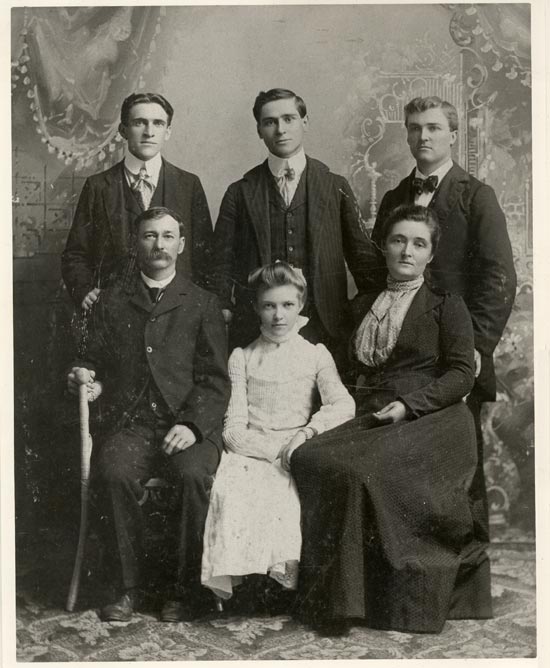
The John Kerr Family - Rodney's great grandfather, John in lower left who came to America from Scotland to fight in the Civil War and free the slaves. He was the youngest son of the Earl of Lothian. Rodney's grandfather Roy, is in the upper left of the photo.

Fairy Princess only daughter - who left her body shortly after this picture was taken.
|






















